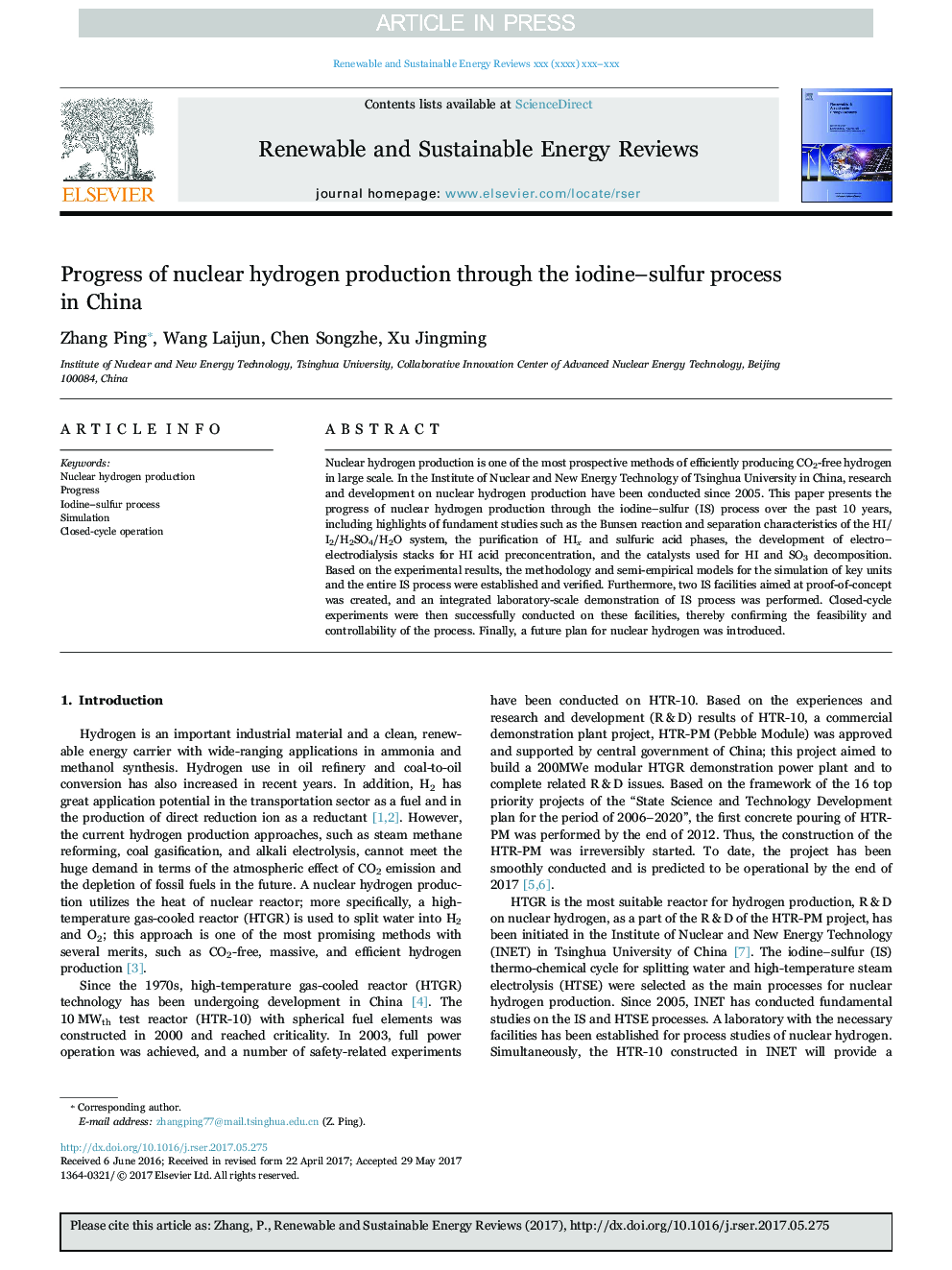| Article ID | Journal | Published Year | Pages | File Type |
|---|---|---|---|---|
| 8112157 | Renewable and Sustainable Energy Reviews | 2018 | 11 Pages |
Abstract
Nuclear hydrogen production is one of the most prospective methods of efficiently producing CO2-free hydrogen in large scale. In the Institute of Nuclear and New Energy Technology of Tsinghua University in China, research and development on nuclear hydrogen production have been conducted since 2005. This paper presents the progress of nuclear hydrogen production through the iodine-sulfur (IS) process over the past 10 years, including highlights of fundament studies such as the Bunsen reaction and separation characteristics of the HI/I2/H2SO4/H2O system, the purification of HIx and sulfuric acid phases, the development of electro-electrodialysis stacks for HI acid preconcentration, and the catalysts used for HI and SO3 decomposition. Based on the experimental results, the methodology and semi-empirical models for the simulation of key units and the entire IS process were established and verified. Furthermore, two IS facilities aimed at proof-of-concept was created, and an integrated laboratory-scale demonstration of IS process was performed. Closed-cycle experiments were then successfully conducted on these facilities, thereby confirming the feasibility and controllability of the process. Finally, a future plan for nuclear hydrogen was introduced.
Related Topics
Physical Sciences and Engineering
Energy
Renewable Energy, Sustainability and the Environment
Authors
Zhang Ping, Wang Laijun, Chen Songzhe, Xu Jingming,
